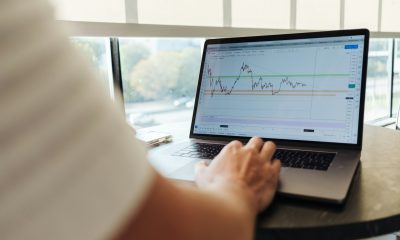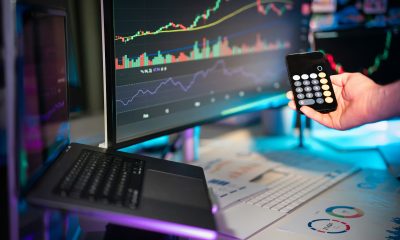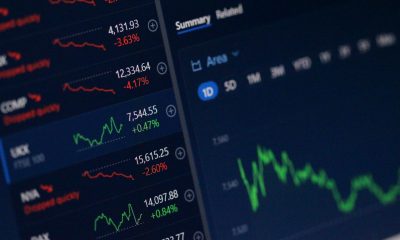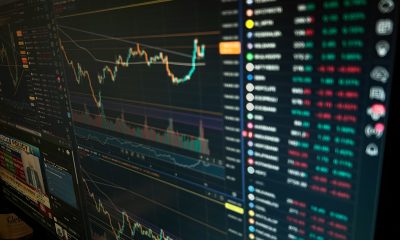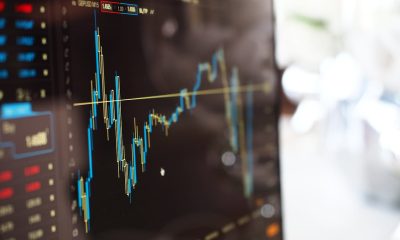Africa
Moroccan Bond Market Faces Rising Rates Amid Liquidity Strain
The Moroccan bond market faces rising short- and medium-term rates amid widening bank liquidity deficits and high Treasury demand. Liquidity tightened 4.4% to MAD 140.1 billion as Bank Al-Maghrib boosted advances. Despite stable TMP and slight MONIA easing, investor caution persists. BKGR foresees ongoing short-term tension as liquidity pressures and fiscal needs persist.

The Moroccan bond market is entering a phase of heightened vigilance. As the bank liquidity deficit widens and the Treasury’s needs remain high, primary rates continue to rise on short- and medium-term maturities.
The bond market enters October with persistent tension on short-term maturities, reflecting sustained demand from the Treasury and a gradual adjustment in rate expectations. In its latest Fixed Income Weekly, BMCE Capital Global Research (BKGR) paints a picture of an active but still constrained money market, where the apparent stability of the TMP masks underlying imbalances between financing needs and liquidity availability.
Over the period from October 2 to 8, the banking liquidity deficit worsened by 4.4% to reach -140.1 billion dirhams (MMDH), a significant increase. Faced with this tension, Bank Al-Maghrib increased its 7-day advances, bringing their volume to 66.6 billion dirhams compared to 54.9 billion a week earlier. Treasury investments also increased, with a maximum daily outstanding of 18.4 billion dirhams, compared to 15.4 billion dirhams the previous week.
The weighted average rate (WAR) remained virtually stable at 2.25%, while the MONIA, the money market benchmark indicator, fell slightly to 2.173%. According to BKGR, this decline reflects a relative temporary easing of interbank trading, without however reversing the underlying trend of a still strong demand for liquidity.
Increase in primary rates on short and medium maturities
On the primary bond market, the Treasury raised 3.6 billion dirhams, or 61% of the amount initially proposed (5.9 billion). These fundraisings are concentrated on 52-week and 2-year maturities, with respective limit rates of 2.1636% and 2.3597%.
Rates continued to rise, up 16.8 basis points for the 52-week line and 7.2 points for the 2-year line. BKGR interprets this development as a direct consequence of a more restricted supply in the short term, combined with cautious expectations on the part of institutional investors.
The Moroccan bond market is indeed factoring in the prospect of Bank Al-Maghrib maintaining key rates, at least until the end of the year, in a context where underlying inflation remains contained but still sensitive to external tensions.
The secondary bond market experienced mixed dynamics. Short-term maturities (26 and 52 weeks) eased slightly, by -2.41 and -4.44 basis points respectively, while 2-year and 10-year bonds recorded moderate increases of +2.25 and +2.10 basis points.
This scissor movement illustrates, according to BKGR, the caution of investors, who still favor intermediate durations. Long-term rates, stable or slightly rising, reflect a lack of clear signals on the prospects for monetary easing in the medium term. The yield curve thus remains flat at short maturities, but is gradually inflecting at long term, a sign of a bond market in search of equilibrium.
Cautious Short-Term Forecasts for the Moroccan bond market
For the coming days, BKGR anticipates a decline in the pace of Central Bank interventions. Seven-day advances are expected to fall to MAD 56 billion, compared to MAD 66.6 billion previously. However, October will be marked by significant Treasury withdrawals, estimated at nearly MAD 20 billion.
This factor could, according to BKGR, increase pressure on short and medium maturities, particularly if refinancing conditions do not ease.
“The Moroccan bond market could continue to experience some tension on short and medium maturities, as evidenced by the recent development of 52-week lines,” the research firm emphasizes.
A watermark reading of the Treasury’s strategy
This configuration reflects a strategic adjustment by the Treasury, which is seeking to spread out its fundraising while controlling the cost of debt. The gradual rise in primary rates suggests a desire to smooth the curve without causing excessive pressure on yields.
For their part, investors, although cautious, continue to position themselves in the most liquid maturities, favoring flexibility in an environment where the monetary trajectory remains uncertain. The behavior of secondary rates, combined with the increase in Treasury investments, confirms that the bond market remains well oriented, even if the signals of a real recovery in liquidity remain tentative.
In short, BKGR’s Fixed Income Weekly confirms that the fixed income market is evolving in a phase of orderly adjustment, between monetary prudence and fiscal constraints. The stabilization of the TMP should not mask the underlying tensions that persist in the short term. The fragile balance between liquidity supply and Treasury needs will be one of the main determinants of the trajectory of yields in the coming weeks.
__
(Featured image by MabelAmber via Pixabay)
DISCLAIMER: This article was written by a third party contributor and does not reflect the opinion of Born2Invest, its management, staff or its associates. Please review our disclaimer for more information.
This article may include forward-looking statements. These forward-looking statements generally are identified by the words “believe,” “project,” “estimate,” “become,” “plan,” “will,” and similar expressions. These forward-looking statements involve known and unknown risks as well as uncertainties, including those discussed in the following cautionary statements and elsewhere in this article and on this site. Although the Company may believe that its expectations are based on reasonable assumptions, the actual results that the Company may achieve may differ materially from any forward-looking statements, which reflect the opinions of the management of the Company only as of the date hereof. Additionally, please make sure to read these important disclosures.
First published in LES ECO.ma. A third-party contributor translated and adapted the article from the original. In case of discrepancy, the original will prevail.
Although we made reasonable efforts to provide accurate translations, some parts may be incorrect. Born2Invest assumes no responsibility for errors, omissions or ambiguities in the translations provided on this website. Any person or entity relying on translated content does so at their own risk. Born2Invest is not responsible for losses caused by such reliance on the accuracy or reliability of translated information. If you wish to report an error or inaccuracy in the translation, we encourage you to contact us.

-

 Markets4 days ago
Markets4 days agoRice Market Update: Prices Dip Amid Weak Exports and Global Pressure
-

 Crowdfunding2 weeks ago
Crowdfunding2 weeks agoAI Venture Builder Closes Major £2.5M Round, Strengthening Its Role in Europe’s AI Ecosystem
-

 Impact Investing2 days ago
Impact Investing2 days agoEU Expands Leadership in Sustainable Finance with Record Green Bond Impact
-

 Fintech1 week ago
Fintech1 week agoSwiat Secures BaFin Approval and Accelerates Europe’s Digital Securities Infrastructure
